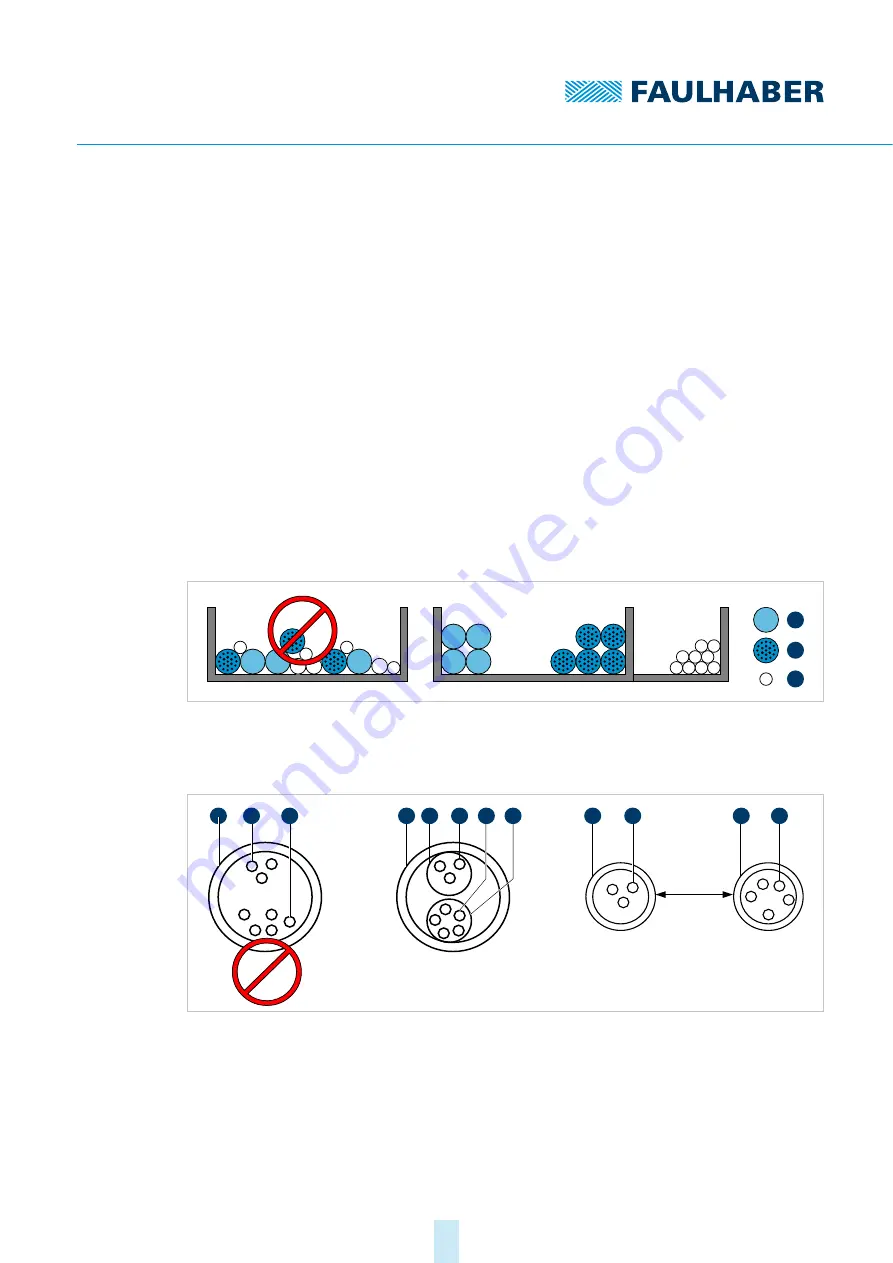
4th edition, 26-08-2020
7000.05058, 4th edition, 26-08-2020
7000.05058
Installation
33
4.3.3
Cable routing
The cable routing depends on various factors, such as:
Is the cable shielded, twisted?
Were interference-reducing measures taken?
What material and what cable routing are used in the cable duct?
Over what surface is the cable routed?
Observe the following when laying the cables:
Use a full-surface, u-shaped and, if possible, metal cable duct.
Lay the cables near the corners of the cable duct.
Separate the cables by function where possible.
Maintain distances when laying the cables.
The distances may vary depending on the zone in the switching cabinet.
If possible, all cables should be twisted pairs or twisted and shielded in function groups
(e.g., motor phases together, Hall sensors and supply together).
Fig. 24: Laying in the cable duct
Fig. 25: Grouping and shielding of the cables
1
High-current cable
2
Digital cable
3
Sensor cable
1
Shielding
2
Motor phase
3
Hall sensor
1
2
3
1
>5
c
m
2
3
1
2
3
1
2
3
1
1
1











































